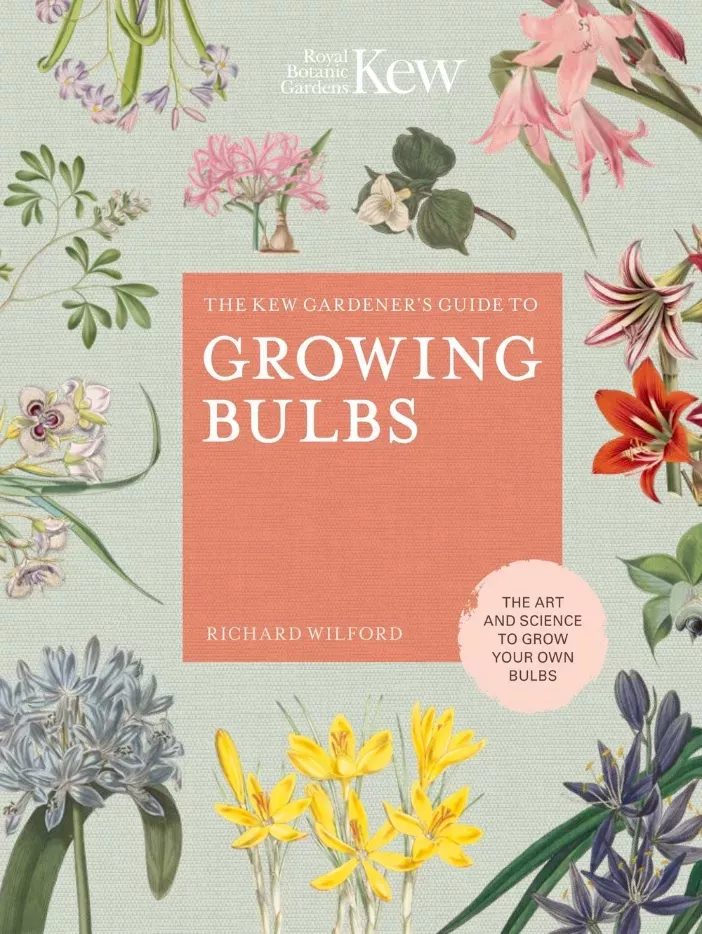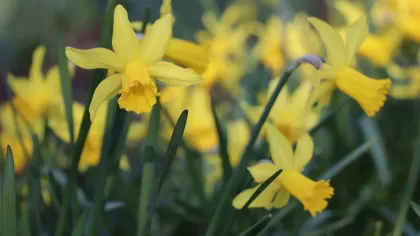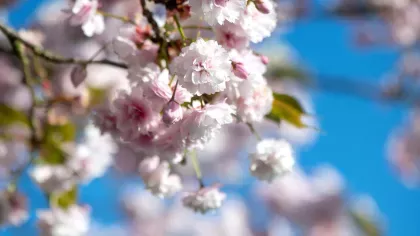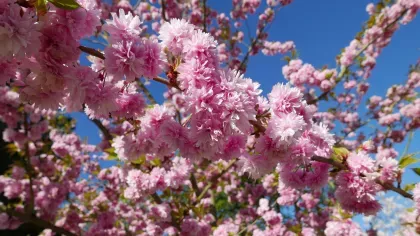17 February 2023
Quiz: What green shoot is that?
How to tell a snowdrop from a daffodil - before they've bloomed

The end of winter is an exciting time: the earth is covered in tiny green shoots, full of potential. You could hold on for several weeks to see if you've got crocuses or snowdrops in your garden, but why wait? Take this short quiz and find out how to tell young bulbs and shoots apart when it's too early for flowers.
What do the leaves look like?

If the plant has long, narrow leaves, what else do you notice about them?

What colour are the shoots?
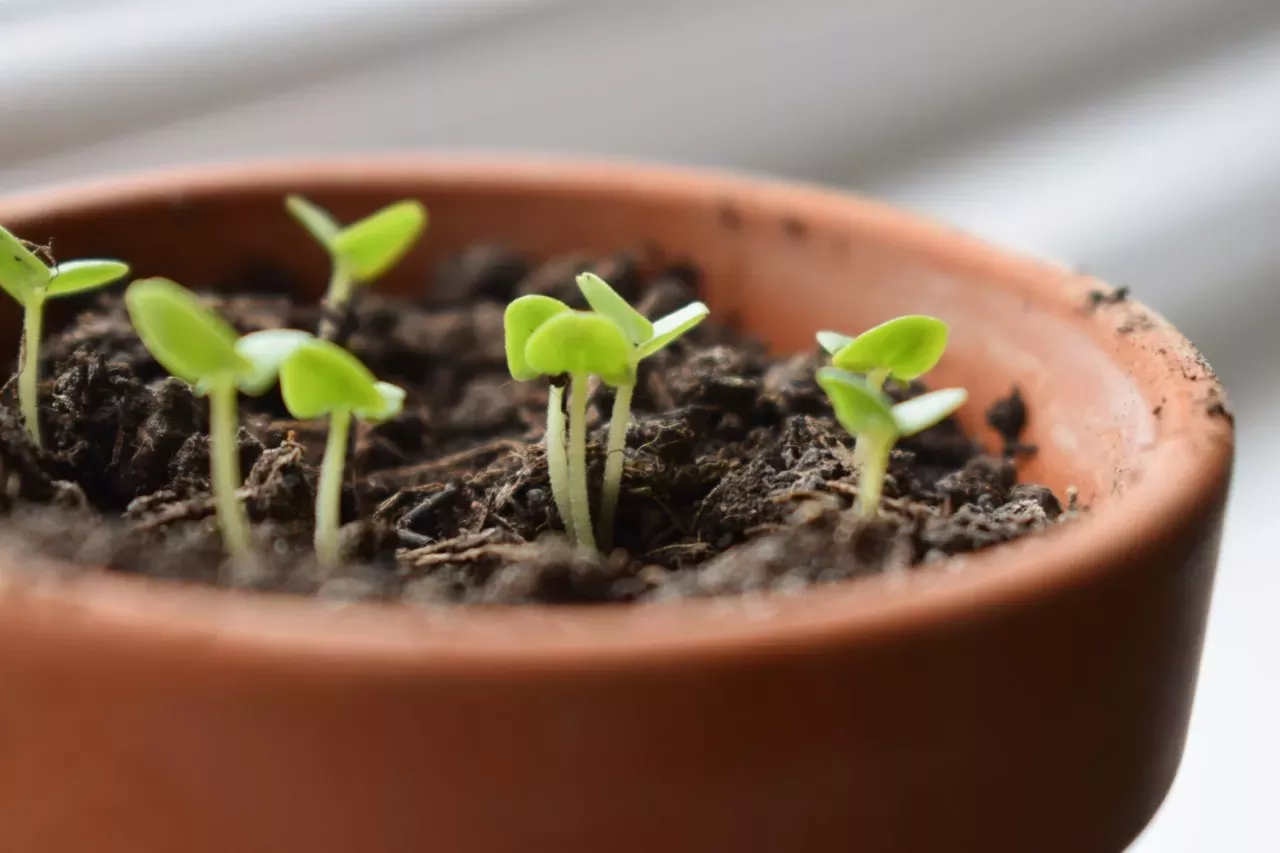
Where is the plant growing?
- In an open space, in small clumps and/or long rows; taller than everything around it
- In swathes under dappled shade

Still not sure?
These are just a few of the most common plants that grow in the UK in early spring. For more help identifying plants, head to Kew's Plant Profiles.
Daffodil (Narcissus)
These cheery bulbs grow in sunny open spaces, with shoots beginning to show around the end of January and flowering between February and May. Look for tall shoots that point straight upwards as they grow. They're a popular choice for gardens, with flowers ranging from the classic bright yellow to orange to pure white. You can see daffodils at Kew Gardens along the Great Broad Walk, around the Temple of Aeolus and in the Natural Area; at Wakehurst, they grow around the Mansion Pond.
There are 36 recognised daffodil species, all in different sizes and colours. Read more in the daffodil Plant Profile.

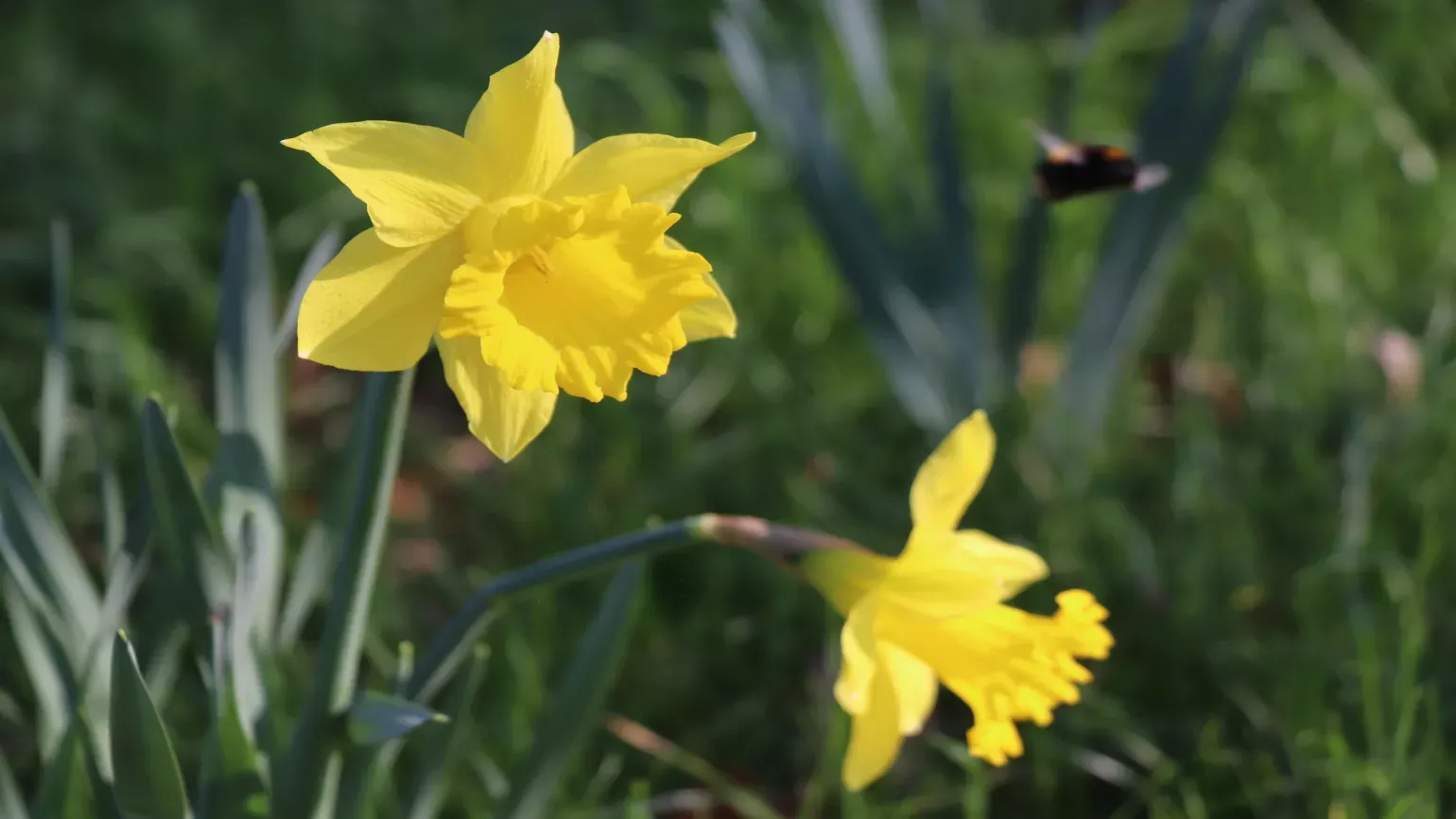

Bluebell (Hyacinthoides non-scripta)
Can you hear the bells? These delicate plants live under trees or in semi-shaded parts of the garden. Shoots appear in April, and in May, millions of plants produce the famous carpets of blue flowers. Occasionally, bluebells can also be pink or white.
Bluebells grow especially well in ancient woodland, and their presence is a sign that a forest may have been growing for 400 years or more. One of the best bluebell woods in London can be seen in Kew's Natural Area, home to woodland that's at least 300 years old. Head to Wakehurst to see a stunning blue carpet over the floor of the Bethlehem Wood.
Did you know?
Not all bluebells are native to the UK. Native bluebells (Hyacinthoides non-scripta) have narrow leaves and flowers arranged on one side of each drooping stem, with a sweet scent. If a bluebell has broader leaves (about 3cm wide) and its flowers are set on all sides of an upright stem with no smell, it's more likely to be an invasive Spanish bluebell (Hyacinthoides hispanica).


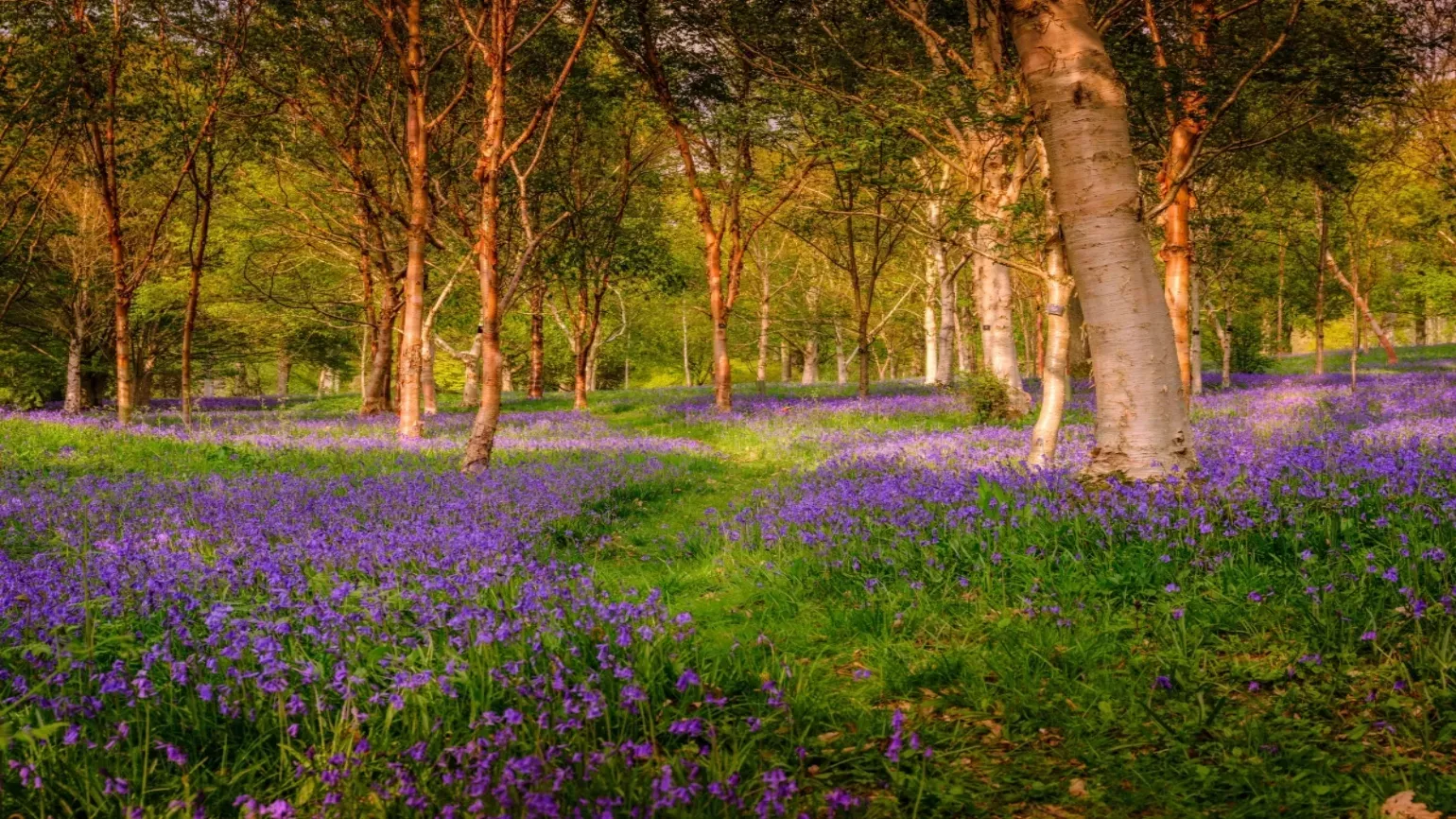
Jonquil (Narcissus jonquilla)
Jonquils are a species of narcissus with cylindrical rush-like leaves and yellow or white flowers like small daffodils. The name comes from the Latin word juncus, meaning "rush".
They're native to Spain and Portugal, but their flowers and scent make them a popular choice for gardens throughout southwest Europe and in the Americas. Like other daffodils, their shoots appear in early spring and flower until early summer.
Head to the Rock Garden near the Davies Alpine House at Kew Gardens to catch jonquils in bloom.


Common snowdrop (Galanthus nivalis)
Snowdrop leaves are long, narrow, and a grey-green shade. Their delicate white flowers appear in January and February - although they can sometimes be seen as early as November because of the warming climate. Snowdrops grow best in damp soil but you'll find them spread throughout parks, gardens, scrub and meadows.
Rare snowdrop bulbs can sell for hundreds of pounds and Kew's Rock Garden is home to several harder-to-find species. The best places to see swathes of snowdrops at Kew Gardens are the Natural Area and around the Temple of Aeolus, while at Wakehurst you can see them around the Winter Garden and the Visitor Centre.
Find out more about snowdrops in their Kew Plant Profile.
Did you know?
The six segments of each flower - three large ones on the outside, three smaller ones on the inside - are called "tepals", rather than petals. Snowdrops have this in common with lilies and tulips.


Wood anemone (Anemone nemorosa)
The clue is in the name: these native flowers can be found in woodland, as well as meadows, banks and hedges. They also grow in places where woodland used to be, so they're sometimes referred to as "woodland ghosts".
Their shoots appear in early spring and they bloom between March and May with white, star-shaped flowers. You can also identify wood anemone by looking for red stems and a musky scent from the leaves.
Kew's 300 year old wood in the Natural Area is the perfect spot for a peaceful woodland stroll.
Did you know?
Wood anemones are also known as "windflowers". In Greek myth, they were the heralds of the Anemoi, the gods of wind, and it was thought the blooms only opened when the wind blew.


Crocus
Appearing from late January and blooming in February and March, crocus are easy to identify by their pale central stripe. They grow from an underground bulb-like structure called a corm and their flowers can range from purple to pink, orange, yellow and white. They like sunshine, growing in woodland, lawns and coastal gardens, and helping to feed insects when they come out of their winter hibernation.
You can see crocus growing in the Woodland Garden and Arboretum at Kew Gardens, and in the Water Gardens at Wakehurst.


Lesser celandine (Ficaria verna)
These dark green, glossy leaves start appearing in late winter, with star-shaped yellow flowers blooming between February and May.
These perennial herbs prefer to grow in damp soil in hedge banks, stream banks and woodland. They can also be found in meadows - and lawns, where they're often considered a weed. However, lesser celandine is native to the UK and does an important job helping to feed pollinators, like bees, in early spring.
Lesser celandine is more closely related to the buttercup than to greater celandine, and is also known as pilewort because it's often used as a herbal remedy for hemorrhoids - although there's limited scientific evidence that it works.
You can spot lesser celandine in the Duke's Garden at Kew.
Did you know?
Daffodils are the stars of William Wordsworth's most famous poem, 'I Wandered Lonely As A Cloud,' but he devoted three poems to his passion for lesser celandine: The Small Celandine, To the Same Flower and To the Small Celandine.


